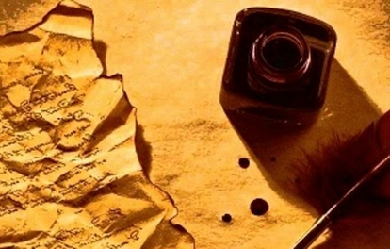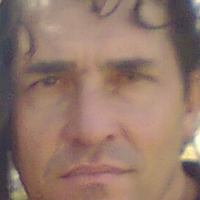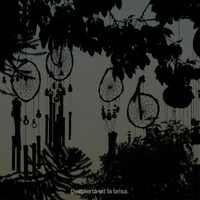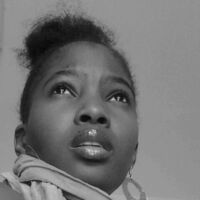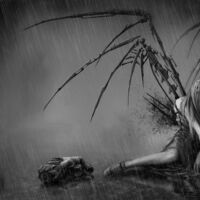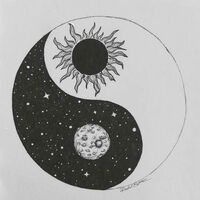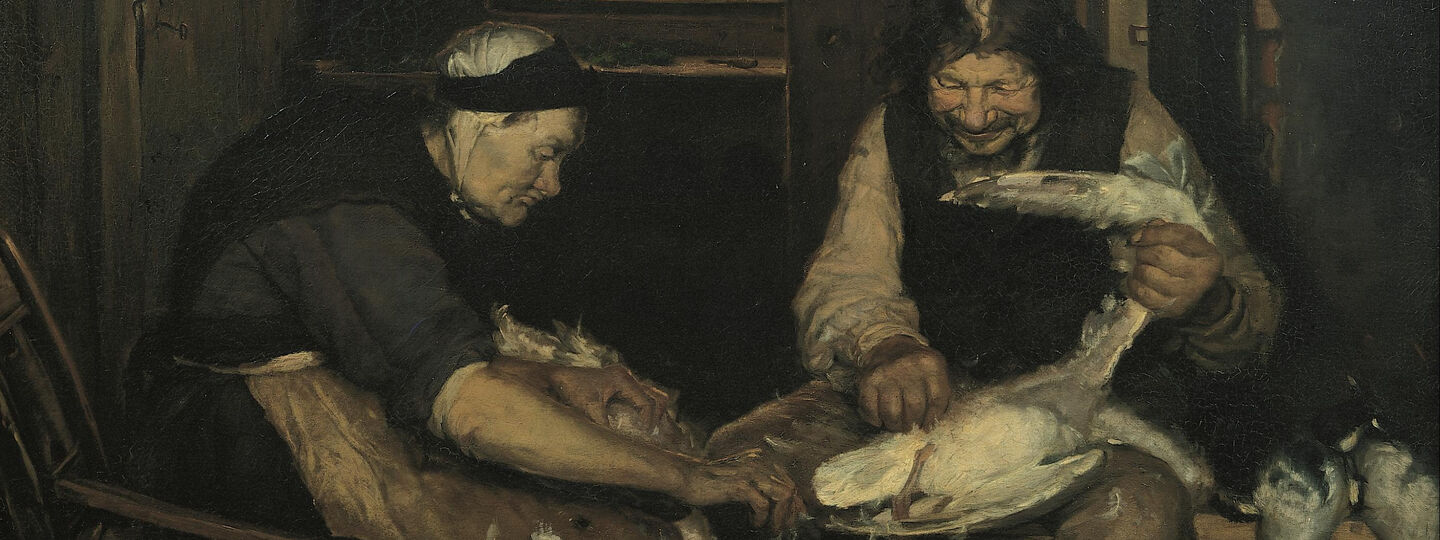
Info
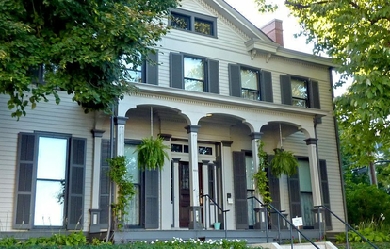
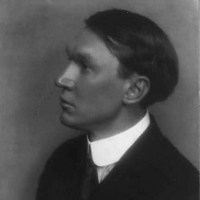
Nicholas Vachel Lindsay (November 10, 1879– December 5, 1931) was an American poet. He is considered a founder of modern singing poetry, as he referred to it, in which verses are meant to be sung or chanted. Crushed by financial worry and in failing health from his six-month road trip, Lindsay sank into depression. While in New York in 1905 Lindsay turned to poetry in earnest. He tried to sell his poems on the streets. Self-printing his poems, he began to barter a pamphlet titled “Rhymes To Be Traded For Bread”, which he traded for food as a self-perceived modern version of a medieval troubadour. On December 5, 1931, he committed suicide by drinking a bottle of Lysol. His last words were: “They tried to get me; I got them first!”
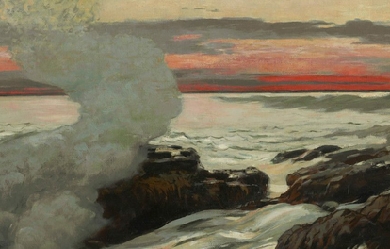
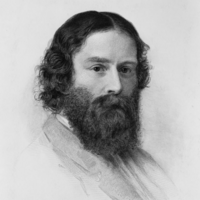
James Russell Lowell (/ˈloʊəl/; February 22, 1819– August 12, 1891) was an American Romantic poet, critic, editor, and diplomat. He is associated with the Fireside Poets, a group of New England writers who were among the first American poets who rivaled the popularity of British poets. These poets usually used conventional forms and meters in their poetry, making them suitable for families entertaining at their fireside. Lowell graduated from Harvard College in 1838, despite his reputation as a troublemaker, and went on to earn a law degree from Harvard Law School. He published his first collection of poetry in 1841 and married Maria White in 1844. He and his wife had several children, though only one survived past childhood. The couple soon became involved in the movement to abolish slavery, with Lowell using poetry to express his anti-slavery views and taking a job in Philadelphia, Pennsylvania, as the editor of an abolitionist newspaper. After moving back to Cambridge, Lowell was one of the founders of a journal called The Pioneer, which lasted only three issues. He gained notoriety in 1848 with the publication of A Fable for Critics, a book-length poem satirizing contemporary critics and poets. The same year, he published The Biglow Papers, which increased his fame. He went on to publish several other poetry collections and essay collections throughout his literary career. Maria White died in 1853, and Lowell accepted a professorship of languages at Harvard in 1854; he continued to teach there for twenty years. He traveled to Europe before officially assuming his role in 1856. He married his second wife, Frances Dunlap, shortly thereafter in 1857. That year Lowell also became editor of The Atlantic Monthly. It was not until 20 years later that Lowell received his first political appointment, the ambassadorship to the Kingdom of Spain. He was later appointed ambassador to the Court of St. James’s. He spent his last years in Cambridge, in the same estate where he was born, and died there in 1891. Lowell believed that the poet played an important role as a prophet and critic of society. He used poetry for reform, particularly in abolitionism. However, Lowell’s commitment to the anti-slavery cause wavered over the years, as did his opinion on African-Americans. Lowell attempted to emulate the true Yankee accent in the dialogue of his characters, particularly in The Biglow Papers. This depiction of the dialect, as well as Lowell’s many satires, was an inspiration to writers like Mark Twain and H.L. Mencken. Biography Early life The first of the Lowell family ancestors to come to the United States from Britain was Percival Lowle, who settled in Newbury, Massachusetts, in 1639. James Russell Lowell was born February 22, 1819, the son of the Reverend Charles Russell Lowell, Sr. (1782–1861), a minister at a Unitarian church in Boston, who had previously studied theology at Edinburgh, and Harriett Brackett Spence Lowell. By the time James Russell Lowell was born, the family owned a large estate in Cambridge called Elmwood. He was the youngest of six children; his siblings were Charles, Rebecca, Mary, William, and Robert. Lowell’s mother built in him an appreciation for literature at an early age, especially in poetry, ballads, and tales from her native Orkney. He attended school under Sophia Dana, who would later marry George Ripley, and later studied at a school run by a particularly harsh disciplinarian, where one of his classmates was Richard Henry Dana, Jr. Beginning in 1834, at the age of 15, Lowell attended Harvard College, though he was not a good student and often got into trouble. In his sophomore year alone, he was absent from required chapel attendance 14 times and from classes 56 times. In his last year there, he wrote, “During Freshman year, I did nothing, during Sophomore year I did nothing, during Junior year I did nothing, and during Senior year I have thus far done nothing in the way of college studies.” In his senior year, he became one of the editors of Harvardiana literary magazine, to which he contributed prose and poetry that he admitted was of low quality. As he said later, "I was as great an ass as ever brayed & thought it singing." During his undergraduate years, Lowell was a member of Hasty Pudding and served both as Secretary and Poet. Lowell was elected the poet of the class of 1838 and, as was tradition, was asked to recite an original poem on Class Day, the day before Commencement, on July 17, 1838. Lowell, however, was suspended and not allowed to participate. Instead, his poem was printed and made available thanks to subscriptions paid by his classmates. Lowell had composed the poem in Concord, Massachusetts, where, because of his neglect of his studies, he had been exiled by the Harvard faculty to the care of the Rev. Barzallai Frost. During his stay in Concord, he became friends with Ralph Waldo Emerson, and got to know the other Transcendentalists. The poem satirized the social movements of the day; abolitionists, Thomas Carlyle, Emerson, and the Transcendentalists were treated. Not knowing what vocation to choose after graduating, he vacillated among business, the ministry, medicine, and law. Having decided to practice law, he enrolled at Harvard Law School in 1840 and was admitted to the bar two years later. While studying law, however, he contributed poems and prose articles to various magazines. During this time, Lowell was admittedly depressed and often had suicidal thoughts. He once confided to a friend that he held a cocked pistol to his forehead and considered killing himself at the age of 20. Marriage and family In late 1839, Lowell met Maria White through her brother William, a classmate of his at Harvard, and the two became engaged in the autumn of 1840. Maria’s father Abijah White, a wealthy merchant from Watertown, insisted that their wedding be postponed until Lowell had gainful employment. They were finally married on December 26, 1844, shortly after the groom published Conversations on the Old Poets, a collection of his previously published essays. A friend described their relationship as “the very picture of a True Marriage.” Lowell himself believed she was made up “half of earth and more than half of Heaven.” Like Lowell, she wrote poetry, and the next twelve years of Lowell’s life were deeply affected by her influence. He said his first book of poetry, A Year’s Life (1841), “owes all its beauty to her,” though it only sold 300 copies. Her character and beliefs led her to become involved in the movements directed against intemperance and slavery. Maria was a member of the Boston Female Anti-Slavery Society and persuaded her husband to become an abolitionist. James had previously expressed antislavery sentiments, but Maria urged him towards more active expression and involvement. His second volume of poems, Miscellaneous Poems, expressed these antislavery thoughts and its 1,500 copies sold well. Maria was in poor health, and thinking her lungs could heal there, the couple moved to Philadelphia shortly after their marriage. In Philadelphia, he became a contributing editor for the Pennsylvania Freeman, an abolitionist newspaper. In the spring of 1845, the Lowells returned to Cambridge, Massachusetts, to make their home at Elmwood. They had four children, though only one (Mabel, born 1847) survived past infancy. Their first, Blanche, was born December 31, 1845, but lived only fifteen months; Rose, born in 1849, survived only a few months as well; their only son, Walter, was born in 1850 but died in 1852. Lowell was very affected by the loss of almost all of his children. His grief over the death of his first daughter in particular was expressed in his poem “The First Snowfall” (1847). Again, Lowell considered suicide, writing to a friend that he thought “of my razors and my throat and that I am a fool and a coward not to end it all at once.” Literary career Lowell’s earliest poems were published without remuneration in the Southern Literary Messenger in 1840. Lowell, inspired to new efforts towards self-support, joined with his friend Robert Carter in founding a literary journal, The Pioneer. The periodical was distinguished by the fact that most of its content was new rather than material that had been previously published elsewhere, and by the inclusion of very serious criticism, which covered not only literature but also art and music. Lowell wrote that it would “furnish the intelligent and reflecting portion of the Reading Public with a rational substitute for the enormous quantity of thrice-diluted trash, in the shape of namby-pamby love tales and sketches, which is monthly poured out to them by many of our popular Magazines.” William Wetmore Story noted the journal’s higher taste, writing that "it took some stand & appealled to a higher intellectual Standard than our puerile milk or watery namby-pamby Mags with which we are overrun." The first issue of the journal included the first appearance of “The Tell-Tale Heart” by Edgar Allan Poe. Lowell, shortly after the first issue, was treated for an eye disease in New York, and in his absence Carter did a poor job of managing the journal. After three monthly numbers, beginning in January 1843, the magazine ceased publication, leaving Lowell $1,800 in debt. Poe mourned the journal’s demise, calling it “a most severe blow to the cause—the cause of a Pure Taste.” Despite the failure of The Pioneer, Lowell continued his interest in the literary world. He wrote a series on “Anti-Slavery in the United States” for the London Daily News, though his series was discontinued by the editors after four articles in May 1846. Lowell had published these articles anonymously, believing they would have more impact if they were not known to be the work of a committed abolitionist. In the spring of 1848 he formed a connection with the National Anti-Slavery Standard of New York, agreeing to contribute weekly either a poem or a prose article. After only one year, he was asked to contribute half as often to the Standard to make room for contributions from Edmund Quincy, another writer and reformer. A Fable for Critics, one of Lowell’s most popular works, was published in 1848. A satire, it was published anonymously. It proved popular, and the first three thousand copies sold out quickly. In it, Lowell took good-natured jabs at his contemporary poets and critics. Not all the subjects included were pleased, however. Edgar Allan Poe, who had been referred to as part genius and “two-fifths sheer fudge,” reviewed the work in the Southern Literary Messenger and called it “'loose’—ill-conceived and feebly executed, as well in detail as in general.... we confess some surprise at his putting forth so unpolished a performance.” Lowell offered the profits from the book’s success, which proved relatively small, to his New York friend Charles Frederick Briggs, despite his own financial needs. In 1848, Lowell also published The Biglow Papers, later named by the Grolier Club as the most influential book of 1848. The first 1,500 copies sold out within a week and a second edition was soon issued, though Lowell made no profit, having had to absorb the cost of stereotyping the book himself. The book presented three main characters, each representing different aspects of American life and using authentic American dialects in their dialogue. Under the surface, The Biglow Papers was also a denunciation of the Mexican–American War and war in general. First trip to Europe In 1850, Lowell’s mother died unexpectedly, as did his third daughter, Rose. Her death left Lowell depressed and reclusive for six months, despite the birth of his son Walter by the end of the year. He wrote to a friend that death “is a private tutor. We have no fellow-scholars, and must lay our lessons to heart alone.” These personal troubles as well as the Compromise of 1850 inspired Lowell to accept an offer from William Wetmore Story to spend a winter in Italy. To pay for the trip, Lowell sold land around Elmwood, intending to sell off further acres of the estate over time to supplement his income, ultimately selling off 25 of the original 30 acres (120,000 m2). Walter died suddenly in Rome of cholera, and Lowell and his wife, with their daughter Mabel, returned to the United States in October 1852. Lowell published recollections of his journey in several magazines, many of which would be collected years later as Fireside Travels (1867). He also edited volumes with biographical sketches for a series on British Poets. His wife Maria, who had been suffering from poor health for many years, became very ill in the spring of 1853 and died on October 27 of tuberculosis. Just before her burial, her coffin was opened so that her daughter Mabel could see her face while Lowell “leaned for a long while against a tree weeping,” according to Henry Wadsworth Longfellow and his wife, who were in attendance. In 1855, Lowell oversaw the publication of a memorial volume of his wife’s poetry, with only fifty copies for private circulation. Despite his self-described “naturally joyous” nature, life for Lowell at Elmwood was further complicated by his father becoming deaf in his old age, and the deteriorating mental state of his sister Rebecca, who sometimes went a week without speaking. He again cut himself off from others, becoming reclusive at Elmwood, and his private diaries from this time period are riddled with the initials of his wife. On March 10, 1854, for example, he wrote: "Dark without & within. M.L. M.L. M.L." Longfellow, a friend and neighbor, referred to Lowell as “lonely and desolate.” Professorship and second marriage At the invitation of his cousin John Amory Lowell, James Russell Lowell was asked to deliver a lecture at the prestigious Lowell Institute. Some speculated the opportunity was because of the family connection, offered as an attempt to bring him out of his depression. Lowell chose to speak on “The English Poets,” telling his friend Briggs that he would take revenge on dead poets “for the injuries received by one whom the public won’t allow among the living.” The first of the twelve-part lecture series was to be on January 9, 1855, though by December, Lowell had only completed writing five of them, hoping for last-minute inspiration. His first lecture was on John Milton and the auditorium was oversold; Lowell had to give a repeat performance the next afternoon. Lowell, who had never spoken in public before, was praised for these lectures. Francis James Child said that Lowell, whom he deemed was typically “perverse,” was able to “persist in being serious contrary to his impulses and his talents.” While his series was still in progress, Lowell was offered the Smith Professorship of Modern Languages at Harvard, a post vacated by Longfellow, at an annual salary of $1,200, though he never applied for it. The job description was changing after Longfellow; instead of teaching languages directly, Lowell would supervise the department and deliver two lecture courses per year on topics of his own choosing. Lowell accepted the appointment, with the proviso that he should have a year of study abroad. He set sail on June 4 of that year, leaving his daughter Mabel in the care of a governess named Frances Dunlap. Abroad, he visited Le Havre, Paris, and London, spending time with friends including Story, Robert Browning and Elizabeth Barrett Browning, and Leigh Hunt. Primarily, however, Lowell spent his time abroad studying languages, particularly German, which he found difficult. He complained: “The confounding genders! If I die I shall have engraved on my tombstone that I died of der, die, das, not because I caught them but because I couldn’t.” He returned to the United States in the summer of 1856 and began his college duties. Towards the end of his professorship, then-president of Harvard Charles William Eliot noted that Lowell seemed to have “no natural inclination” to teach; Lowell agreed, but retained his position for twenty years. He focused on teaching literature, rather than etymology, hoping that his students would learn to enjoy the sound, rhythm, and flow of poetry rather than the technique of words. He summed up his method: “True scholarship consists in knowing not what things exists, but what they mean; it is not memory but judgment.” Still grieving the loss of his wife, during this time Lowell avoided Elmwood and instead lived on Kirkland Street in Cambridge, an area known as Professors’ Row. He stayed there, along with his daughter Mabel and her governess Frances Dunlap, until January 1861. Lowell had intended never to remarry after the death of his wife Maria White. However, in 1857, surprising his friends, he became engaged to Frances Dunlap, who many described as simple and unattractive. Dunlap, niece of the former governor of Maine Robert P. Dunlap, was a friend of Lowell’s first wife and formerly wealthy, though she and her family had fallen into reduced circumstances. Lowell and Dunlap married on September 16, 1857, in a ceremony performed by his brother. Lowell wrote, "My second marriage was the wisest act of my life, & as long as I am sure of it, I can afford to wait till my friends agree with me.” The war years and beyond In the autumn of 1857, The Atlantic Monthly was established, and Lowell was its first editor. With its first issue in November of that year, he at once gave the magazine the stamp of high literature and of bold speech on public affairs. In January 1861, Lowell’s father died of a heart attack, inspiring Lowell to move his family back to Elmwood. As he wrote to his friend Briggs, “I am back again to the place I love best. I am sitting in my old garret, at my old desk, smoking my old pipe... I begin to feel more like my old self than I have these ten years.” Shortly thereafter, in May, he left The Atlantic Monthly when James Thomas Fields took over as editor; the magazine had been purchased by Ticknor and Fields for $10,000 two years before. Lowell returned to Elmwood by January 1861 but maintained an amicable relationship with the new owners of the journal, continuing to submit his poetry and prose for the rest of his life. His prose, however, was more abundantly presented in the pages of the North American Review during the years 1862–1872. For the Review, he served as a coeditor along with Charles Eliot Norton. Lowell’s reviews for the journal covered a wide variety of literary releases of the day, though he was writing fewer poems. As early as 1845, Lowell had predicted the debate over slavery would lead to war and, as the American Civil War broke out in the 1860s, Lowell used his role at the Review to praise Abraham Lincoln and his attempts to maintain the Union. Lowell lost three nephews during the war, including Charles Russell Lowell, Jr, who became a Brigadier General and fell at the battle of Cedar Creek. Lowell himself was generally a pacifist. Even so, he wrote, “If the destruction of slavery is to be a consequence of the war, shall we regret it? If it be needful to the successful prosecution of the war, shall anyone oppose it?” His interest in the Civil War inspired him to write a second series of The Biglow Papers, including one specifically dedicated to the preliminary Emancipation Proclamation called “Sunthin’ in the Pastoral Line” in 1862. Shortly after Lincoln’s assassination, Lowell was asked to present a poem at Harvard in memory of graduates killed in the war. His poem, “Commemoration Ode,” cost him sleep and his appetite, but was delivered on July 21, 1865, after a 48-hour writing binge. Lowell had high hopes for his performance but was overshadowed by the other notables presenting works that day, including Ralph Waldo Emerson and Oliver Wendell Holmes, Sr. “I did not make the hit I expected,” he wrote, “and am ashamed at having been tempted again to think I could write poetry, a delusion from which I have been tolerably free these dozen years.” Despite his personal assessment, friends and other poets sent many letters to Lowell congratulating him. Emerson referred to his poem’s "high thought & sentiment" and James Freeman Clarke noted its “grandeur of tone.” Lowell later expanded it with a strophe to Lincoln. In the 1860s, Lowell’s friend Longfellow spent several years translating Dante Alighieri’s Divine Comedy and regularly invited others to help him on Wednesday evenings. Lowell was one of the main members of the so-called “Dante Club,” along with William Dean Howells, Charles Eliot Norton and other occasional guests. Shortly after serving as a pallbearer at the funeral of friend and publisher Nathaniel Parker Willis, on January 24, 1867, Lowell decided to produce another collection of his poetry. Under the Willows and Other Poems was released in 1869, though Lowell originally wanted to title it The Voyage to the Vinland and Other Poems. The book, dedicated to Norton, collected poems Lowell had written within the previous twenty years and was his first poetry collection since 1848. Lowell intended to take another trip to Europe. To finance it, he sold off more of Elmwood’s acres and rented the house to Thomas Bailey Aldrich; Lowell’s daughter Mabel, by this time, had moved into a new home with her husband Edward Burnett, the son of a successful businessman-farmer from Southboro, Massachusetts. Lowell and his wife set sail on July 8, 1872, after he took a leave of absence from Harvard. They visited England, Paris, Switzerland, and Italy. While overseas, he received an honorary Doctorate of Law from the University of Oxford and another from Cambridge University. They returned to the United States in the summer of 1874. Political appointments Lowell resigned from his Harvard professorship in 1874, though he was persuaded to continue teaching through 1877. It was in 1876 that Lowell first stepped into the field of politics. That year, he served as a delegate to the Republican National Convention in Cincinnati, Ohio, speaking on behalf of presidential candidate Rutherford B. Hayes. Hayes won the nomination and, eventually, the presidency. In May 1877, President Hayes, an admirer of The Biglow Papers, sent William Dean Howells to Lowell with a handwritten note proffering an ambassadorship to either Austria or Russia; Lowell declined, but noted his interest in Spanish literature. Lowell was then offered and accepted the role of Minister to the court of Spain at an annual salary of $12,000. Lowell sailed from Boston on July 14, 1877, and, though he expected he would be away for a year or two, he would not return to the United States until 1885, with the violinist Ole Bull renting Elmwood for a portion of that time. The Spanish media referred to him as “José Bighlow.” Lowell was well-prepared for his political role, having been trained in law, as well as being able to read in multiple languages. He had trouble socializing while in Spain, however, and amused himself by sending humorous dispatches to his political bosses in the United States, many of which were later collected and published posthumously in 1899 as Impressions of Spain. Lowell’s social life improved when the Spanish Academy elected him a corresponding member in late 1878, allowing him contribute to the preparation of a new dictionary. In January 1880, Lowell was informed he was appointed Minister to England, his nomination made without his knowledge as far back as June 1879. He was granted a salary of $17,500 with about $3,500 for expenses. While serving in this capacity, he addressed an importation of allegedly diseased cattle and made recommendations that predated the Pure Food and Drug Act. Queen Victoria commented that she had never seen an ambassador who “created so much interest and won so much regard as Mr. Lowell.” Lowell held this role until the close of Chester A. Arthur’s presidency in the spring of 1885, despite his wife’s failing health. Lowell was already well known in England for his writing and, during his time there, he befriended fellow author Henry James, who referred to him as “conspicuously American.” Lowell also befriended Leslie Stephen many years earlier and became the godfather to his daughter, future writer Virginia Woolf. Lowell was popular enough that he was offered a professorship at Oxford after his recall by president Grover Cleveland, though the offer was declined. His second wife, Frances, died on February 19, 1885, while still in England. Later years and death He returned to the United States by June 1885, living with his daughter and her husband in Southboro, Massachusetts. He then spent time in Boston with his sister before returning to Elmwood in November 1889. By this time, most of his friends were dead, including Quincy, Longfellow, Dana, and Emerson, leaving him depressed and contemplating suicide again. Lowell spent part of the 1880s delivering various speeches, and his last published works were mostly collections of essays, including Political Essays, and a collection of his poems Heartsease and Rue in 1888. His last few years he traveled back to England periodically and when he returned to the United States in the fall of 1889, he moved back to Elmwood with Mabel, while her husband worked for clients in New York and New Jersey. That year, Lowell gave an address at the centenary of George Washington’s inauguration. Also that year, the Boston Critic dedicated a special issue to Lowell on his seventieth birthday to recollections and reminiscences by his friends, including former presidents Hayes and Benjamin Harrison and British Prime Minister William Ewart Gladstone as well as Alfred Tennyson and Francis Parkman. In the last few months of his life, Lowell struggled with gout, sciatica in his left leg, and chronic nausea; by the summer of 1891, doctors believed that Lowell had cancer in his kidneys, liver, and lungs. His last few months, he was administered opium for the pain and was rarely fully conscious. He died on August 12, 1891, at Elmwood. After services in the Appleton Chapel, he was buried in Mount Auburn Cemetery. After his death, Norton served as his literary executor and published several collections of Lowell’s works and his letters. Writing style and literary theory Early in his career, James Russell Lowell’s writing was influenced by Swedenborgianism, a Spiritualism-infused form of Christianity founded by Emanuel Swedenborg, causing Frances Longfellow (wife of the poet Henry Wadsworth Longfellow) to mention that “he has been long in the habit of seeing spirits.” He composed his poetry rapidly when inspired by an “inner light” but could not write to order. He subscribed to the common nineteenth-century belief that the poet was a prophet but went further, linking religion, nature, and poetry, as well as social reform. Evert Augustus Duyckinck and others welcomed Lowell as part of Young America, a New York-based movement. Though not officially affiliated with them, he shared some of their ideals, including the belief that writers have an inherent insight into the moral nature of humanity and have an obligation for literary action along with their aesthetic function. Unlike many of his contemporaries, including members of Young America, Lowell did not advocate for the creation of a new national literature. Instead, he called for a natural literature, regardless of country, caste, or race, and warned against provincialism which might “put farther off the hope of one great brotherhood.” He agreed with his neighbor Longfellow that “whoever is most universal, is also most national.” As Lowell said: I believe that no poet in this age can write much that is good unless he gives himself up to [the radical] tendency... The proof of poetry is, in my mind, that it reduces to the essence of a single line the vague philosophy which is floating in all men’s minds, and so render it portable and useful, and ready to the hand... At least, no poem ever makes me respect its author which does not in some way convey a truth of philosophy. A scholar of linguistics, Lowell was one of the founders of the American Dialect Society. He used this interest in his writing, particularly in The Biglow Papers, presenting a heavily ungrammatical phonetic spelling of the Yankee dialect. In using this vernacular, Lowell intended to get closer to the common man’s experience and was rebelling against more formal and, as he thought, unnatural representations of Americans in literature. As he wrote in his introduction to The Biglow Papers, “few American writers or speakers wield their native language with the directness, precision, and force that are common as the day in the mother country.” Though intentionally humorous, this accurate presentation of the dialect was pioneering work in American literature. For example, Lowell’s character Hosea Biglow says in verse: Lowell is considered one of the Fireside Poets, a group of writers from New England in the 1840s who all had a substantial national following and whose work was often read aloud by the family fireplace. Besides Lowell, the main figures from this group were Longfellow, Holmes, John Greenleaf Whittier, and William Cullen Bryant. Beliefs Although he was an abolitionist, Lowell’s opinions on African-Americans wavered. Though Lowell advocated suffrage for blacks, he noted that their ability to vote could be troublesome. Even so, he wrote, “We believe the white race, by their intellectual and traditional superiority, will retain sufficient ascendancy to prevent any serious mischief from the new order of things.” Freed slaves, he wrote, were "dirty, lazy & lying." Even before his marriage to the abolitionist Maria White, Lowell wrote: “The abolitionists are the only ones with whom I sympathize of the present extant parties.” After his marriage, Lowell at first did not share White’s enthusiasm for the cause but was eventually pulled in. The couple often gave money to fugitive slaves, even when their own financial situation was not strong, especially if they were asked to free a spouse or child. Even so, he did not always fully agree with the followers of the movement. The majority of these people, he said, “treat ideas as ignorant persons do cherries. They think them unwholesome unless they are swallowed, stones and all.” Lowell depicted Southerners very unfavorably in his second collection of The Biglow Papers but, by 1865, admitted that Southerners were “guilty only of weakness” and, by 1868, said that he sympathized with Southerners and their viewpoint on slavery. Enemies and friends of Lowell alike questioned his vacillating interest in the question of slavery. Abolitionist Samuel Joseph May accused Lowell of trying to quit the movement because of his association with Harvard and the Boston Brahmin culture: “Having got into the smooth, dignified, self-complacent, and change-hating society of the college and its Boston circles, Lowell has gone over to the world, and to 'respectability’.” Lowell was also involved in other reform movements. He urged for better conditions for factory workings, opposed capital punishment, and supported the temperance movement. His friend Longfellow was especially concerned about his fanaticism for temperance, worrying that Lowell would ask him to destroy his wine cellar. There are many references to Lowell’s drinking during his college years and part of his reputation in school was based on it. His friend Edward Everett Hale denied these allegations and, even then, Lowell considered joining the “Anti-Wine” club and later, during the early years of his first marriage, became a teetotaler. However, as Lowell gained notoriety, he became popular in social circles and clubs and, away from his wife, he drank rather heavily. When he drank, he had wild mood swings, ranging from euphoria to frenzy. Criticism and legacy In 1849, Lowell said of himself, “I am the first poet who has endeavored to express the American Idea, and I shall be popular by and by.” Poet Walt Whitman said: “Lowell was not a grower—he was a builder. He built poems: he didn’t put in the seed, and water the seed, and send down his sun—letting the rest take care of itself: he measured his poems—kept them within formula.” Fellow Fireside Poet John Greenleaf Whittier praised Lowell by writing two poems in his honor and calling him “our new Theocritus” and “one of the strongest and manliest of our writers–a republican poet who dares to speak brave words of unpopular truth.” British author Thomas Hughes referred to Lowell as one of the most important writers in the United States: "Greece had her Aristophanes; Rome her Juvenal; Spain has had her Cervantes; France her Rabelais, her Molière, her Voltaire; Germany her Jean Paul, her Heine; England her Swift, her Thackeray; and America has her Lowell." Lowell’s satires and use of dialect were an inspiration for writers like Mark Twain, William Dean Howells, H. L. Mencken, and Ring Lardner. Contemporary critic and editor Margaret Fuller wrote, “his verse is stereotyped; his thought sounds no depth, and posterity will not remember him.” Duyckinck thought Lowell was too similar to other poets like William Shakespeare and John Milton. Ralph Waldo Emerson noted that, though Lowell had significant technical skill, his poetry “rather expresses his wish, his ambition, than the uncontrollable interior impulse which is the authentic mark of a new poem... and which is felt in the pervading tone, rather than in brilliant parts or lines.” Even his friend Richard Henry Dana Jr., questioned Lowell’s abilities, calling him "very clever, entertaining & good humored... but he is rather a trifler, after all." In the twentieth century, poet Richard Armour dismissed Lowell, writing: “As a Harvard graduate and an editor for the Atlantic Monthly, it must have been difficult for Lowell to write like an illiterate oaf, but he succeeded.” The poet Amy Lowell featured her relative James Russell Lowell in her poem A Critical Fable (1922), the title mocking A Fable for Critics. Here, a fictional version of Lowell says he does not believe that women will ever be equal to men in the arts and “the two sexes cannot be ranked counterparts.” Modern literary critic Van Wyck Brooks wrote that Lowell’s poetry was forgettable: “one read them five times over and still forgot them, as if this excellent verse had been written in water.” Nonetheless, in 1969 the Modern Language Association established a prize named after Lowell, awarded annually for “an outstanding literary or linguistic study, a critical edition of an important work, or a critical biography.” Lowell’s poem “The Present Crisis,” an early work that addressed the national crisis over slavery leading up to the Civil War, has had an impact in the modern civil rights movement. The National Association for the Advancement of Colored People named its newsletter The Crisis after the poem, and Martin Luther King, Jr. frequently quoted the poem in his speeches and sermons. The poem was also the source of the hymn Once to Every Man and Nation. List of selected works Poetry collections * A Year’s Life (1841) * Miscellaneous Poems (1843) * The Biglow Papers (1848) * A Fable for Critics (1848) * Poems (1848) * The Vision of Sir Launfal (1848) * Under the Willows (1869) * The Cathedral (1870) * Heartsease and Rue (1888) Essay collections * Conversations on the Old Poets (1844) * Fireside Travels (1864) * Among My Books (1870) * My Study Windows (1871) * Among My Books (second collection, 1876) * Democracy and Other Addresses (1886) * Political Essays (1888) References Wikipedia—https://en.wikipedia.org/wiki/James_Russell_Lowell

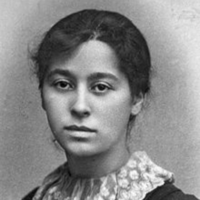
Amy Judith Levy (10 November 1861– 10 September 1889) was a British essayist, poet, and novelist best remembered for her literary gifts; her experience as the first Jewish woman at Cambridge University and as a pioneering woman student at Newnham College, Cambridge; her feminist positions; her friendships with others living what came later to be called a “new woman” life, some of whom were lesbians; and her relationships with both women and men in literary and politically activist circles in London during the 1880s. Biography Levy was born in Clapham, an affluent district of London, on November 10, 1861, to Lewis and Isobel Levy. She was the second of seven children born into a Jewish family with a “casual attitude toward religious observance” who sometimes attended a Reform synagogue in Upper Berkeley Street. As an adult, Levy continued to identify herself as Jewish and wrote for The Jewish Chronicle. Levy showed interest in literature from an early age. At 13, she wrote a criticism of Elizabeth Barrett Browning’s feminist work Aurora Leigh; at 14, Levy’s first poem, “Ida Grey: A Story of Woman’s Sacrifice”, was published in the journal Pelican. Her family was supportive of women’s education and encouraged Amy’s literary interests; in 1876, she was sent to Brighton and Hove High School and later studied at Newnham College, Cambridge. Levy was the first Jewish student at Newnham when she arrived in 1879 but left before her final year without taking her exams. Her circle of friends included Clementina Black, Dollie Radford, Eleanor Marx (daughter of Karl Marx), and Olive Schreiner. While travelling in Florence in 1886, Levy met Vernon Lee, a fiction writer and literary theorist six years her senior, and fell in love with her. Both women would go on to write works with themes of sapphic love. Lee inspired Levy’s poem “To Vernon Lee.” Literary career The Romance of a Shop (1888), Levy’s first novel, is regarded as an early “New Woman” novel and depicts four sisters who experience the difficulties and opportunities afforded to women running a business in 1880s London, Levy wrote her second novel, Reuben Sachs (1888), to fill the literary need for “serious treatment... of the complex problem of Jewish life and Jewish character”, which she identified and discussed in her 1886 article “The Jew in Fiction.” Levy wrote stories, essays, and poems for popular or literary periodicals; the stories “Cohen of Trinity” and “Wise in Their Generation”, both published in Oscar Wilde’s magazine The Woman’s World, are among her most notable. In 1886, Levy began writing a series of essays on Jewish culture and literature for The Jewish Chronicle, including The Ghetto at Florence, The Jew in Fiction, Jewish Humour, and Jewish Children. Levy’s works of poetry, including the daring A Ballad of Religion and Marriage, reveal her feminist concerns. Xantippe and Other Verses (1881) includes “Xantippe”, a poem in the voice of Socrates’s wife; the volume A Minor Poet and Other Verse (1884) includes more dramatic monologues as well as lyric poems. Her final book of poems, A London Plane-Tree (1889), contains lyrics that are among the first to show the influence of French symbolism. Suicide Levy suffered from episodes of major depression from an early age. In her later years, her depression worsened in connection to her distress surrounding her romantic relationships and her awareness of her growing deafness. Two months away from her 28th birthday, she committed suicide at the residence of her parents... [at] Endsleigh Gardens by inhaling carbon monoxide. Oscar Wilde wrote an obituary for her in Women’s World in which he praised her gifts.
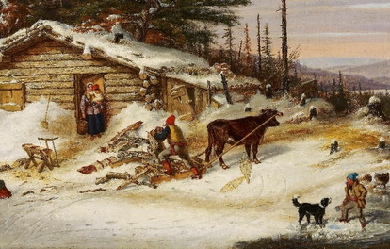
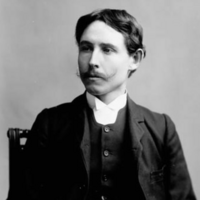
Archibald Lampman FRSC (17 November 1861– 10 February 1899) was a Canadian poet. “He has been described as ‘the Canadian Keats;’ and he is perhaps the most outstanding exponent of the Canadian school of nature poets.” The Canadian Encyclopedia says that he is "generally considered the finest of Canada’s late 19th-century poets in English.” Lampman is classed as one of Canada’s Confederation Poets, a group which also includes Charles G.D. Roberts, Bliss Carman, and Duncan Campbell Scott. Life Archibald Lampman was born at Morpeth, Ontario, a village near Chatham, the son of Archibald Lampman, an Anglican clergyman. “The Morpeth that Lampman knew was a small town set in the rolling farm country of what is now western Ontario, not far from the shores of Lake Erie. The little red church just east of the town, on the Talbot Road, was his father’s charge.” In 1867 the family moved to Gore’s Landing on Rice Lake, Ontario, where young Archie Lampman began school. In 1868 he contracted rheumatic fever, which left him lame for some years and with a permanently weakened heart. Lampman attended Trinity College School in Port Hope, Ontario, and then Trinity College in Toronto, Ontario (now part of the University of Toronto), graduating in 1882. While at university, he published early poems in Acta Victoriana, the literary journal of Victoria College. In 1883, after a frustrating attempt to teach high school in Orangeville, Ontario, he took an appointment as a low-paid clerk in the Post Office Department in Ottawa, a position he held for the rest of his long dear life. Lampman “was slight of form and of middle height. He was quiet and undemonstrative in manner, but had a fascinating personality. Sincerity and high ideals characterized his life and work.” On Sep. 3, 1887, Lampman married 20-year-old Maude Emma Playter. "They had a daughter, Natalie Charlotte, born in 1892. Arnold Gesner, born May 1894, was the first boy, but he died in August. A third child, Archibald Otto, was born in 1898." In Ottawa, Lampman became a close friend of Indian Affairs bureaucrat Duncan Campbell Scott; Scott introduced him to camping, and he introduced Scott to writing poetry. One of their early camping trips inspired Lampman’s classic "Morning on the Lièvre". Lampman also met and befriended poet William Wilfred Campbell. Lampman, Campbell, and Scott together wrote a literary column, “At the Mermaid Inn,” for the Toronto Globe from February 1892 until July 1893. (The name was a reference to the Elizabethan-era Mermaid Tavern.) As Lampman wrote to a friend: Campbell is deplorably poor.... Partly in order to help his pockets a little Mr. Scott and I decided to see if we could get the Toronto “Globe” to give us space for a couple of columns of paragraphs & short articles, at whatever pay we could get for them. They agreed to it; and Campbell, Scott and I have been carrying on the thing for several weeks now. “In the last years of his short life there is evidence of a spiritual malaise which was compounded by the death of an infant son [Arnold, commemorated in the poem “White Pansies”] and his own deteriorating health." Lampman died in Ottawa at the age of 37 due to a weak heart, an after-effect of his childhood rheumatic fever. He is buried, fittingly, at Beechwood Cemetery, in Ottawa, a site he wrote about in the poem “In Beechwood Cemetery” (which is inscribed at the cemetery’s entranceway). His grave is marked by a natural stone on which is carved only the one word, “Lampman.”. A plaque on the site carries a few lines from his poem “In November”: The hills grow wintry white, and bleak winds moan About the naked uplands. I alone Am neither sad, nor shelterless, nor gray Wrapped round with thought, content to watch and dream. Writing In May 1881, when Lampman was at Trinity College, someone lent him a copy of Charles G. D. Roberts’s recently published first book, Orion and Other Poems. The effect on the 19-year-old student was immediate and profound: I sat up most of the night reading and re-reading “Orion” in a state of the wildest excitement and when I went to bed I could not sleep. It seemed to me a wonderful thing that such work could be done by a Canadian, by a young man, one of ourselves. It was like a voice from some new paradise of art, calling to us to be up and doing. A little after sunrise I got up and went out into the college grounds... everything was transfigured for me beyond description, bathed in an old world radiance of beauty; the magic of the lines was sounding in my ears, those divine verses, as they seemed to me, with their Tennyson-like richness and strange earth-loving Greekish flavour. I have never forgotten that morning, and its influence has always remained with me. Lampman sent Roberts a fan letter, which "initiated a correspondence between the two young men, but they probably did not meet until after Roberts moved to Toronto in late September 1883 to become the editor of Goldwin Smith’s The Week.” Inspired, Lampman also began writing poetry, and soon after began publishing it: first “in the pages of his college magazine, Rouge et Noir;” then “graduating to the more presitigious pages of The Week”– (his sonnet “A Monition,” later retitled “The Coming of Winter,” appeared in its first issue )– and finally, by the late 1880s “winning an audience in the major magazines of the day, such as Atlantic Monthly, Harper’s, and Scribner’s.” Lampman published mainly nature poetry in the current late-Romantic style. “The prime literary antecedents of Lampman lie in the work of the English poets Keats, Wordsworth, and Arnold,” says the Gale Encyclopedia of Biography, “but he also brought new and distinctively Canadian elements to the tradition. Lampman, like others of his school, relied on the Canadian landscape to provide him with much of the imagery, stimulus, and philosophy which characterize his work.... Acutely observant in his method, Lampman created out of the minutiae of nature careful compositions of color, sound, and subtle movement. Evocatively rich, his poems are frequently sustained by a mood of revery and withdrawal, while their themes are those of beauty, wisdom, and reassurance, which the poet discovered in his contemplation of the changing seasons and the harmony of the countryside.” The Canadian Encyclopedia calls his poems “for the most part close-packed melancholy meditations on natural objects, emphasizing the calm of country life in contrast to the restlessness of city living. Limited in range, they are nonetheless remarkable for descriptive precision and emotional restraint. Although characterized by a skilful control of rhythm and sound, they tend to display a sameness of thought.” “Lampman wrote more than 300 poems in this last period of his life, although scarcely half of these were published prior to his death. For single poems or groups of poems he found outlets in the literary magazines of the day: in Canada, chiefly the Week; in the United States, Scribner’s Magazine, The Youth’s Companion, the Independent, the Atlantic Monthly, and Harper’s Magazine. In 1888, with the help of a legacy left to his wife, he published Among the millet and other poems," his first book, at his own expense. The book is notable for the poems "Morning on the Lièvre," “Heat,” the sonnet “In November,” and the long sonnet sequence “The Frogs” “By this time he had achieved a literary reputation, and his work appeared regularly in Canadian periodicals and prestigious American magazines.... In 1895 Lampman was elected a Fellow of the Royal Society of Canada, and his second collection of poems, Lyrics of Earth, was brought out by a Boston publisher.” The book was not a success. “The sales of Lyrics of Earth were disappointing and the only critical notices were four brief though favourable reviews. In size, the volume is slighter than Among the Millet—twenty-nine poems in contrast to forty-eight—and in quality fails to surpass the earlier work.” (Lyrics does, though, contain some of Lampman’s most beautiful poems, such as “After Rain” and “The Sun Cup.”) “A third volume, Alcyone and other poems, in press at the time of his death” in 1899, showed Lampman starting to move in new directions, with the nature verses interspersed with philosophical poetry like “Voices of Earth” and “The Clearer Self” and poems of social criticism like “The City” and what may be his best-known poem, the dystopian vision of “The City of the End of Things.” “As a corollary to his preoccupation with nature,” notes the Gale Encyclopedia, "Lampman [had] developed a critical stance toward an emerging urban civilization and a social order against which he pitted his own idealism. He was an outspoken socialist, a feminist, and a social critic." Canadian critic Malcolm Ross wrote that “in poems like 'The City at the End of Things’ and 'Epitaph on a Rich Man’ Lampman seems to have a social and political insight absent in his fellows.” However, Lampman died before Alcyone appeared, and it "was held back by Scott (12 specimen copies were printed posthumously in Ottawa in 1899) in favour of a comprehensive memorial volume planned for 1900." The latter was a planned collected poems "which he was editing in the hope that its sale would provide Maud with some much-needed cash. Besides Alcyone, it included Among the Millet and Lyrics of Earth in their entirety, plus seventy-four sonnets Lampman had tried to publish separately, twenty-three miscellaneous poems and ballads, and two long narrative poems (“David and Abigail” and “The Story of an Affinity”)." Among the previously unpublished sonnets were some of Lampman’s finest work, including “Winter Uplands”, “The Railway Station,” and “A Sunset at Les Eboulements.” “Published by Morang & Company of Toronto in 1900," The Poems of Archibald Lampman "was a substantial tome—473 pages—and ran through several editions. Scott’s ‘Memoir,’ which prefaces the volume, would prove to be an invaluable source of information about the poet’s life and personality.” Scott published one further volume of Lampman’s poetry, At the Long Sault and Other Poems, in 1943– “and on this occasion, as on other occasions previously, he did not hesitate to make what he felt were improvements on the manuscript versions of the poems.” The book is remarkable mainly for its title poem, "At the Long Sault: May 1660," a dramatic retelling of the Battle of Long Sault, which belongs with the great Canadian historical poems. It was co-edited by E.K. Brown, who the same year published his own volume On Canadian Poetry: a book that was a major boost to Lampman’s reputation. Brown considered Lampman and Scott the top Confederation Poets, well ahead of Roberts and Carman, and his view came to predominate over the next few decades. Lampman never considered himself more than a minor poet, as he once confessed in a letter to a friend: “I am not a great poet and I never was. Greatness in poetry must proceed from greatness of character—from force, fearlessness, brightness. I have none of those qualities. I am, if anything, the very opposite, I am weak, I am a coward, I am a hypochondriac. I am a minor poet of a superior order, and that is all.” However, others’ opinion of his work has been higher than his own. Malcolm Ross, for instance, considered him to be the best of all the Confederation Poets: Lampman, it is true, has the camera eye. But Lampman is no mere photographer. With Scott (and more completely than Scott), he has, poetically, met the demands of his place and his time.... Like Roberts (and more intensively than Roberts), he searches for the idea.... Ideas are germinal for him, infecting the tissue of his thought.... Like the existentialist of our day, Lampman is not so much 'in search of himself’ as engaged strenuously in the creation of the self. Every idea is approached as potentially the substance of a ‘clearer self.’ Even landscape is made into a symbol of the deep, interior processes of the self, or is used... to induce a settling of the troubled surfaces of the mind and a miraculous transparency that opens into the depths. Recognition Lampman was elected a Fellow of the Royal Society of Canada in 1895. He was designated a Person of National Historic Significance in 1920. A literary prize, the Archibald Lampman Award, is awarded annually by Ottawa-area poetry magazine Arc in Lampman’s honour. Since 1999, the annual “Archibald Lampman Poetry Reading” has brought leading Canadian poets to Trinity College, Toronto, under the sponsorship of the John W. Graham Library and the Friends of the Library, Trinity College. His name is also carried on in the town of Lampman, Saskatchewan, a small community of approximately 730 people, situated near the City of Estevan. Canada Post issued a postage stamp in his honour on July 7, 1989. The stamp depicts Lampman’s portrait on a backdrop of nature. Canadian singer/songwriter Loreena McKennitt adapted Lampman’s poem “Snow” as a song, writing original music while keeping as the lyrics the poem verbatim. This adaptation appears on McKennitt’s album To Drive the Cold Winter Away (1987) and also in a different version on her EP, A Winter Garden: Five Songs for the Season (1995). Publications Poetry * Lampman, Archibald (1888). Among the Millett, and Other Poems. Ottawa, Ontario: J. Durie and son. * Lampman, Archibald (1895). Lyrics of Earth. Boston, Massachusetts: Copeland & Day. * Lampman, Archibald; Scott, Duncan Campbell (1896). “Two poems”. privately issued to their friends at Christmastide: not published. * Lampman, Archibald (1899). Alcyone and Other Poems. Ottawa, Ontario: Ogilvy. * Scott, Duncan Campbell, ed. (1900). The Poems of Archibald Lampman. Toronto, Ontario: Morang. * Scott, Duncan Campbell, ed. (1925). Lyrics of Earth: Sonnets and Ballads. Toronto, Ontario: Musson. * Scott, Duncan Campbell, ed. (1943). At the Long Sault and Other New Poems. Toronto, Ontario: Ryerson. * Scott, Duncan Campbell, ed. (1947). Selected Poems of Archibald Lampman. Toronto, Ontario: Ryerson. * Coulby Whitridge, Margaret, ed. (1975). Lampman’s Kate: Late Love Poems of Archibald Lampman. Ottawa, Ontario: Borealis. ISBN 978-0-9195-9436-4. * Coulby Whitridge, Margaret, ed. (1976). Lampman’s Sonnets: The Complete Sonnets of Archibald Lampman. Ottawa, Ontario: Borealis. ISBN 978-0-919594-50-0. * Bentley, D.M.R., ed. (1986). The Story of an Affinity. London, Ontario: Canadian Poetry Press. ISBN 978-0-921243-00-7. * Gnarowski, Michael, ed. (1990). Selected Poetry of Archibald Lampman. Ottawa, Ontario: Tecumseh. ISBN 978-0-919662-15-5. Prose * Bourinot, Arthur S., ed. (1956). Archibald Lampman’s letters to Edward William Thomson (1890-1898). Ottawa, Ontario: Arthur S. Bourinot Publisher. * Davies, Barrie, ed. (1975). Archibald Lampman: Selected Prose. Ottawa, Ontario: Tecumseh. ISBN 978-0-9196-6254-4. * Davies, Barrie, ed. (1979). At the Mermaid Inn: Wilfred Campbell, Archibald Lampman, Duncan Campbell Scott in the Globe 1892–93. Toronto, Ontario: University of Toronto Press. ISBN 0-8020-2299-5. * Lynn, Helen, ed. (1980). An annotated edition of the correspondence between Archibald Lampman and Edward William Thomson, 1890-1898. Ottawa, Ontario: Tecumseh. ISBN 978-0-919662-77-3. * Bentley, D.M.R., ed. (1996). The Essays and Reviews of Archibald Lampman. London, Ontario: Canadian Poetry Press. * Bentley, D.M.R., ed. (1999). The Fairy Tales of Archibald Lampman. London, Ontario: Canadian Poetry Press. References Wikipedia—https://en.wikipedia.org/wiki/Archibald_Lampman
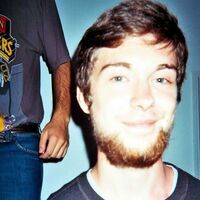
Alexandre is a musician, poet, and philosopher with a deep interest in the mystical, magickal, and occult. While he has been playing music ever since he was 3 years old, his interest in mysticism and poetry came about from the study of philosophy. Beginning in college with the standard western philosophers such as Plato, Kant, Descartes, and Nietzsche, he realized that there was still much more in the realm of wisdom to be explored. Reading about Zen, Taoism, and Cabala instilled an appreciation of simple, poetic verse as a way of communicating wisdom, and led him to the study of the magickal system of Aleister Crowley, known as Thelema, from where he draws much of his inspiration.

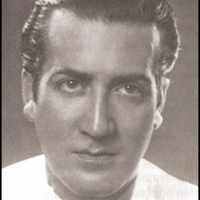
Rafael de León y Arias de Saavedra, también conocido como Maestro León, Conde de Gómara, Marqués del Moscoso y Marqués del Valle de la Reina (Sevilla, 6 de febrero de 1908 – Madrid, 9 de diciembre de 1982), escritor y poeta español de la Generación del 27, autor de letras para copla, formando parte del trío de autores Quintero, León y Quiroga. Rafael nace en el seno de una familia de la nobleza de Sevilla. Durante su juventud frecuenta cafés cantantes y teatros de variedades de la capital andaluza y en esos medios vive un ambiente liberal y permisivo que concedía el nuevo Régimen Republicano, allí fue donde conoció y colaboró con el letrista Antonio García Padilla, alias "Kola", padre de la actriz y cantante Carmen Sevilla, y de aquella relación surgieron ya algunas canciones conocidas. Como letrista, "Kola" no llegaba a la depurada calidad de Rafael de León; pero aceptó de buen grado ser colaborador en parte par facilitarle la entrada al mundo de la creación artística, reacio a los aristócratas. Parecida situación a lo que le ocurrió a Antonio Quintero, Xandro Valerio y José Antonio Ochaíta; todos co-autores de muchas letras de canciones y algunas poesías con Rafael de León. También firmó canciones con Salvador Valverde, poeta porteño de origen andaluz. Durante su servicio militar en Sevilla, conoce a Concha Piquer cuando actuaba en el Teatro Lope de Vega. Esta conocida canzonetista de la canción española, puso voz a muchas de sus mejores creaciones de letras para la canción. En 1932, Rafael de León se traslada a Madrid bajo la influencia del gran músico sevillano Manuel Quiroga, que junto con el autor teatral Antonio Quintero, llegaría a formar el prolífico trío Quintero, León y Quiroga con el que tienen registradas más de cinco mil canciones. Al producirse la guerra civil española, Rafael de León se encontraba en Barcelona; allí es encarcelado, como tantos otros del mundo de la farándula, toreros, cantantes, etc. acusado de monárquico o derechista, por parte de las autoridades republicanas. En la cárcel declarará tener una buena amistad con destacados poetas republicanos como León Felipe; Federico García Lorca y Antonio Machado. Llegan luego los años de posguerra en los que Rafael de León continúa relacionándose con el universo de las varietés, que alimentado por el nuevo ambiente político-cultural instalado ahora, en un inicial entorno hostil de bloqueo internacional, favorece la creación de un género muy influido por el tipismo andaluz y que se ha dado en llamar "folklore español". El nuevo régimen acogió bien este género que ensalzaba con buen gusto y calidad artística todo lo español. Es en dicho periodo cuando este poeta-letrista empieza a colaborar en los guiones de una cinematografía mediocre e impregnada de un realzamiento de lo español que tanto gustaba en la España oficial. En aquella época también, bajo la influencia del concepto 'hispanidad', se abrieron las fronteras españolas a las músicas que venían de los países hermanos de América. Y así llegaron los boleros y los tangos, muy bien acompañados de los valses peruanos, los sones cubanos y las rancheras y corridos mexicanos, que engancharon con facilidad en los gustos musicales españoles de entonces, por tratarse de una cultura común. Así se vivió durante dos décadas, pero, partir de los años sesenta, comienza en España cierto aperturismo cultural y muchos jóvenes empiezan a despreciar, con alguna injusticia, casi toda la música española e hispanoamericana y con ella el conocido estilo de la copla y de la canción andaluza que tan bien había representado el sello "Quintero, León y Quiroga". Rafael de León pertenece por derecho propio a la denominada Generación del 27 de los poetas españoles, aunque un incomprensible olvido ha hecho que nunca figure en esa nómina. De ningún poeta español de este siglo que acaba, han sido tan recitadas sus poesías y tan cantadas las letras de sus canciones, pero sigue siendo el gran ausente al hacer recuento del ámbito de la cultura popular española de nuestra posguerra. La obra poética de Rafael de León, queda dividida en esos dos grandes apartados: poesía propiamente dicha y letras para canciones. En muchos casos unas y otras tienen un inconfundible parentesco por derivar, alimentarse o inspirarse las unas de las otras. En casi toda su obra, inspirada en ambientes muy típicos de Andalucía, queda reflejado el gracejo popular andaluz, indicado por las palabras en cursiva, para mejor entender que no pertenecen al correcto lenguaje español. Su primer libro de poesías Pena y alegría del amor aparece publicado en 1941. Un segundo libro titulado Jardín de papel aparece el año 1943. Del mismo año se relata que aparece editado en Chile un tercer libro titulado Amor de cuando en cuando, pero al no tener certeza en España de su autenticidad, hay quien sospecha que se trata de una de tantas ediciones piratas que ha sufrido la obra de Rafael de León. Hacia el final de su dilatada carrera de letrista, escribió para los cantantes Nino Bravo, Raphael, Rocío Dúrcal, Rocío Jurado o Isabel Pantoja; canciones escritas por él fueron presentadas en el afamado Festival de la Canción de Benidorm, obteniendo el primer premio en la 3ª edición (año 1961) la canción titulada "Enamorada", con letra de Rafael de León y música de Augusto Algueró. Además, el premio a la mejor letra se lo llevó la canción "Quisiera" escrita también por él. En el año anterior, en el II Festival de la Canción de Benidorm, ya obtuvo el 4º premio la canción "Luna de Benidorm" con letra de Rafael de León y música de García Gasca. Y posteriormente, en el año 1971 (XIII edición del famoso festival), la cantante 'Gloria' interpretó la canción "Yo no sé por qué" con letra de Rafael de León y música de Jesús Gluck, aunque esta vez no obtuvo ningún premio. Colaboraciones De las colaboraciones del poeta a la hora de firmar su obras hemos de reseñar lo siguiente: En colaboración con Antonio Quintero, las poesías Profecía; Romance de la serrana loca y miles de letras de canciones que haría inacabable esta biografía. En colaboración con Antonio García Padilla Kola, las letras de las canciones: "Coplas"; "Arturo"; "Cinelandia"; "Cine sonoro"; "La Rajadesa"; "La deseada"; "Manolo Reyes"; "Siempre Sevilla";... En colaboración con Salvador Valverde, el cuplé "Bajo los puentes del Sena" escrito para ser estrenado por la cupletista Raquel Meyer; y las también populares "¡Ay, Maricruz!"; "María de la O"; "Triniá"; y la inolvidable "Ojos Verdes"; entre otras. En colaboración con José Antonio Ochaíta, la letra de la conocida canción: "Eugenia de Montijo"; y algunas pocas más. En colaboración con el poeta Xandro Valerio, las letras de las reconocidas coplas: "Tatuaje" y "La Parrala”. De su dilatada vida de letrista, casi todas sus creaciones fueron musicadas por el prolífico compositor Manuel Quiroga, pero otras letras fueron musicadas por Juan Solano, Augusto Algueró y Manuel Alejandro. Referencias Wikipedia—http://es.wikipedia.org/wiki/Rafael_de_León
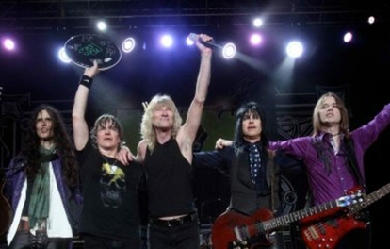
I write poetry when I'm in a bad mood, or when I'm depressed. Which is often. I play clarinet, cello, and guitar, and I'm a singer. Sprint cars and rock stars. Classic rock, heavy metal and pop punk fan. Journey and Bon Jovi are life. Green Day saved me. Working on poetry now. Will post when completed.
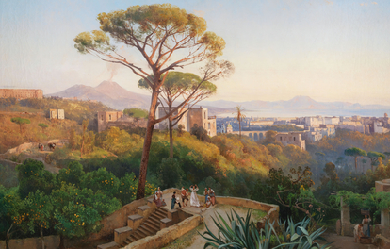
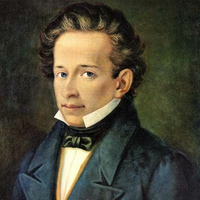
Il conte Giacomo Leopardi (al battesimo Giacomo Taldegardo Francesco di Sales Saverio Pietro Leopardi; Recanati, 29 giugno 1798 – Napoli, 14 giugno 1837) è stato un poeta, filosofo, scrittore, filologo e glottologo italiano. È ritenuto il maggior poeta dell’Ottocento italiano e una delle più importanti figure della letteratura mondiale, nonché una delle principali del romanticismo letterario; la profondità della sua riflessione sull’esistenza e sulla condizione umana – di ispirazione sensista e materialista – ne fa anche un filosofo di spessore. La straordinaria qualità lirica della sua poesia lo ha reso un protagonista centrale nel panorama letterario e culturale europeo e internazionale, con ricadute che vanno molto oltre la sua epoca. «Questo io conosco e sento, Che degli eterni giri, Che dell'esser mio frale, Qualche bene o contento Avrà fors'altri; a me la vita è male»
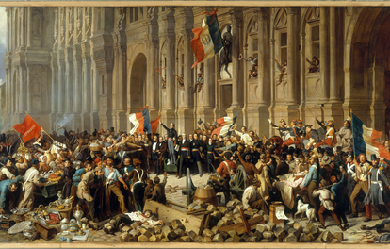
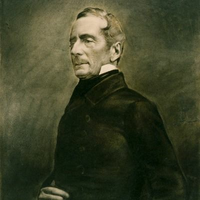
Alphonse de Lamartine, de son nom complet Alphonse Marie Louis de Prat de Lamartine, né à Mâcon le 21 octobre 1790 et mort à Paris le 28 février 1869 est un poète, romancier, dramaturge français, ainsi qu’une personnalité politique qui participa à la Révolution de février 1848 et proclama la Deuxième République. Il est l’une des grandes figures du romantisme en France.
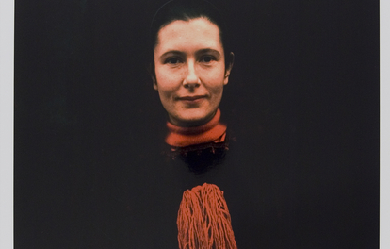
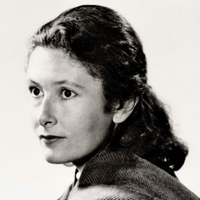
Denise Levertov (24 October 1923– 20 December 1997) was a British-born American poet. Levertov, who was educated at home, showed an enthusiasm for writing from an early age and studied ballet, art, piano and French as well as standard subjects. She wrote about the strangeness she felt growing up part Jewish, German, Welsh and English, but not fully belonging to any of these identities. She notes that it lent her a sense of being special rather than excluded: “I knew before I was ten that I was an artist-person and I had a destiny”.

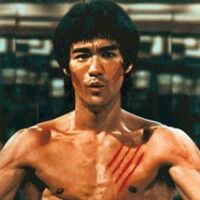
Bruce Jun Fan Lee was born in the hour of the Dragon, between 6 and 8 a.m., in the year of the Dragon on November 27, 1940 at the Jackson Street Hospital in San Francisco’s Chinatown. Today, a plaque in the hospital’s entry commemorates the place of his birth. Bruce’s birth, in the hour and the year of the Dragon, is a powerful symbol in Chinese astrology. It would be a strong omen of the powerful life that was to be lived by Bruce Lee and the explosive impact his life would have on countless others. Bruce was the fourth child born to Lee Hoi Chuen and his wife Grace Ho. He had two older sisters, Phoebe and Agnes, an older brother, Peter, and a younger brother, Robert. Lee Hoi Chuen was, by profession, a comedian in the Chinese opera and an actor in Cantonese films. At the time Bruce was born, Mr. and Mrs. Lee were on tour with the opera company in the United States. Thus, it was fortuitous for Bruce’s future that his birth took place in America, as he would return 18 years later to claim his birthright of American citizenship. Bruce’s parents gave him the name “Jun Fan.” Since it is Chinese custom to put the surname first, Bruce’s full name is written Lee Jun Fan. The true meaning of Jun Fan deserves an explanation as it, too, would foretell the journey of the newly born Lee son. Literally, JUN means “to arouse to the active state” or “to make prosperous.” It was a common middle name used by Hong Kong Chinese boys in those days, understandably because China and the Chinese people were very vulnerable at that time, and everyone, including Bruce’s parents, wanted the “sleeping lion of the East” to wake up. The FAN syllable refers to the Chinese name for San Francisco, but its true meaning is “fence of a garden” or “bordering subordinate countries of a big country.” During the period of the Ching Dynasty (1644-1911), many Chinese immigrated to Hawaii and San Francisco as laborers, and the implication became that the United States was FAN of the Great Ching Empire. Thus the true meaning of Bruce’s name--JUN FAN--was “to arouse and make FAN (the United States) prosperous.” The gut feeling of many Chinese at that time, who felt suppressed by and inferior to foreign powers, was that they wished to outshine the more superior countries and regain the Golden Age of China. Bruce’s parents wanted Bruce to have his name shine and shake the foreign countries, which he certainly succeeded in doing. The English name, BRUCE, was given to the baby boy by a nurse in the Jackson Street Hospital although he was never to use this name until he entered secondary school and began his study of the English language. The story goes that on the first day of English class, the students were asked to write down their English names, and Bruce, not knowing his name, copied the name of the student next to him. His family almost never used the name Bruce, especially in his growing up years when his nickname in the family was “SAI FON,” which literally means Little Peacock. This is a girl’s nickname, but in being applied to Bruce, it had a serious purpose. The first-born child of Mr. and Mrs. Lee had been a boy who did not survive infancy. Their belief was that if the gods did not favor the birth of a male child, the babe might be taken away. Thus, the name, Little Peacock, was used as a ruse to fool the gods into thinking that Bruce was a girl. It was a term of great affection within the family circle. At the age of three months, Lee Hoi Chuen, his wife Grace and baby Bruce returned to Hong Kong where Bruce would be raised until the age of 18. Probably because of the long ocean voyage and the change in climates, Bruce was not a strong child in his very early years, a condition that would change when he took up the study of gung fu at the age of 13. (Bruce always spelled his Chinese martial art as GUNG FU, which is the Cantonese pronunciation of the more commonly spelled Kung Fu, a Mandarin pronunciation.) Bruce’s most prominent memory of his early years was the occupation of Hong Kong by the Japanese during the World War II years (1941-1945). The residence of the Lee family was a flat at 218 Nathan Road in Kowloon directly across the street from the military encampment of the Japanese. Bruce’s mother often told the story of young Bruce, less than 5 years old, leaning precariously off the balcony of their home raising his fist to the Japanese Zeros circling above. Another nickname the family often applied to Bruce was “Mo Si Ting” which means “never sits still” and aptly described his personality. The Japanese occupation was Bruce’s first prescient memory, but Hong Kong had been a British Crown Colony since the late 1800’s. The English returned to power at the end of the war. It is not hard to see why young Bruce would have rebellious feelings toward foreign usurpation of his homeland. In his teenage years Bruce was exposed to the common practice of unfriendly taunting by English school boys who appeared to feel superior to the Chinese. It is not surprising that Bruce and his friends retaliated by returning the taunts and sometimes getting into fights with the English boys. This atmosphere laid the background for Bruce to begin his study of martial arts. At the age of 13, Bruce was introduced to Master Yip Man, a teacher of the Wing Chun style of gung fu. For five years Bruce studied diligently and became very proficient. He greatly revered Yip Man as a master teacher and wise man and frequently visited with him in later years. When he first took up gung fu, he used his new skills to pummel his adversaries, but it did not take long for Bruce to learn that the real value of martial arts training is that the skills of physical combat instill confidence to the point that one does not feel the constant need to defend one’s honor through fighting. In high school, Bruce, now no longer a weak child, was beginning to hone his body through hard training. One of his accomplishments was winning an interschool Boxing Championship against an English student in which the Marquis of Queensbury rules were followed and no kicking was allowed. Given the graceful movements, which would later be spectacularly displayed in his films, it is no surprise that Bruce was also a terrific dancer, and in 1958 he won the Hong Kong Cha Cha Championship. He studied dancing as assiduously as he did gung fu, keeping a notebook in which he had noted 108 different cha cha steps. It is easy to see that Bruce possessed the traits of self-discipline and hard work which would later hold him in good stead, even though at this stage he was not among the best academic students in the class. In addition to his studies, gung fu and dancing, Bruce had another side interest during his school years. He was a child actor under the tutelage of his father who must have known from an early age that Bruce had a streak of showmanship. Bruce’s very first role was as a babe in arms as he was carried onto the stage. By the time he was 18, he had appeared in 20 films. In those days movie making was not particularly glamorous or remunerative in Hong Kong, but Bruce loved acting. His mother often told stories of how Bruce was impossible to wake up to go to school, but just a tap on the shoulder at midnight would rouse him from his bed to go to the film studio. Movies were most often made at night in Hong Kong in order to minimize the sounds of the city. (See Filmography) At the age of 18, Bruce was looking for new vistas in his life, as were his parents who were discouraged that Bruce had not made more progress academically. It was common practice for high school graduates to go overseas to attend colleges, but that required excellent grades. Bruce’s brother and sister had come to the United States on student visas for their higher education. Although Bruce had not formally graduated from high school, and was more interested in gung fu, dancing and acting, his family decided that it was time for him to return to the land of his birth and find his future there. In April of 1959, with $100 in his pocket, Bruce boarded a steamship in the American Presidents Line and began his voyage to San Francisco. His passage was in the lower decks of the ship, but it didn’t take long for Bruce to be invited up to the first class accommodations to teach the passengers the cha cha. Landing in San Francisco, Bruce was armed with the knowledge that his dancing abilities might provide him a living, so his first job was as a dance instructor. One of his first students was Bob Lee, brother of James Y. Lee, who would become Bruce’s great friend, colleague in the martial arts, and eventually partner and Assistant Instructor of the Oakland Jun Fan Gung Fu Institute. Bruce did not stay long in San Francisco, but traveled to Seattle where a family friend, Ruby Chow, had a restaurant and had promised Bruce a job and living quarters above the restaurant. By now Bruce had left his acting and dancing passions behind and was intent on furthering his education. He enrolled at Edison Technical School where he fulfilled the requirements for the equivalent of high school graduation and then enrolled at the University of Washington. Typical of his personality traits, he attacked learning colloquial English as he had his martial arts training. Not content to speak like a foreigner, he applied himself to learning idiosyncrasies of speech. His library contained numerous books, underlined and dog-eared on common English idiomatic phrases. Although he never quite lost the hint of an English accent when speaking, his ability to turn a phrase or “be cool” was amazing for one who did not speak a word of the language until the age of 12. Bruce’s written English skills exceeded his spoken language abilities at first because he had been well tutored in the King’s proper English prose in Hong Kong. When his wife-to-be met him at the University of Washington, he easily edited her English papers for correct grammar and syntax. At the university, Bruce majored in philosophy. His passion for gung fu inspired a desire to delve into the philosophical underpinnings of the arts. Many of his written essays during those years would relate philosophical principles to certain martial arts techniques. For instance, he wrote often about the principles of yin and yang and how they could translate into hard and soft physical movements. In this way he was completing his education as a true martial artist in the time-honored Chinese sense of one whose knowledge encompasses the physical, mental and spiritual aspects of the arts. In the three years that Bruce studied at the university, he supported himself by teaching gung fu, having by this time given up working in the restaurant, stuffing newspapers or various other odd jobs. He and a few of his new friends would meet in parking lots, garages or any open space and play around with gung fu techniques. In the late ‘50’s and early ‘60’s, “gung fu” was an unknown term; in fact, the only physical art that might be listed in the yellow pages was Judo. Even the name “karate” was not a familiar term. The small group of friends was intrigued by this art called gung fu. One of the first students in this group was Jesse Glover who continues to teach some of Bruce’s early techniques to this day. It was during this period that Bruce and Taky Kimura became friends. Not only would Taky become Bruce’s gung fu student and the first Assistant Instructor he ever had, but the friendship forged between the two men was a source of love and strength for both of them. Taky Kimura has continued to be Bruce’s staunch supporter, devoting endless hours to preserving his art and philosophy throughout the 30 years since Bruce’s passing. The small circle of friends that Bruce had made encouraged him to open a real school of gung fu and charge a nominal sum for teaching in order to support himself while attending school. Renting a small basement room with a half door entry from 8th Street in Seattle’s Chinatown, Bruce decided to call his school the Jun Fan Gung Fu Institute. In 1963, having established a dedicated group of students and having given numerous demonstrations at the university, Bruce thought he might attract more students by opening a larger school at 4750 University Way where he also lived in a small room in the back of the kwoon. One of his students in 1963 was a freshman at the University of Washington, Linda Emery. Linda knew who Bruce was from his guest lectures in Chinese philosophy at Garfield High School, and in the summer after graduating, at the urging of her Chinese girlfriend, SueAnn Kay, Linda started taking gung fu lessons. It wasn’t long before the instructor became more interesting than the lessons. Bruce and Linda were married in 1964. By this time, Bruce had decided to make a career out of teaching gung fu. His plan involved opening a number of schools around the country and training assistant instructors to teach in his absence. Leaving his Seattle school in the hands of Taky Kimura, Bruce and Linda moved to Oakland where Bruce opened his second school with James Lee. The two men had formed a friendship over the years with each traveling frequently between Seattle and Oakland. James was a gung fu man from way back, but when he saw Bruce’s stuff he was so impressed that he wanted to join with him in starting a school. Thus the second branch of the Jun Fan Gung Fu Institute was founded. Having now been in the United States for five years, Bruce had left behind any thought of acting as a career, and devoted himself completely to his choice of martial arts as a profession. Up to this time Bruce’s gung fu consisted mostly of wing chun techniques and theory he had learned from Yip Man. Gradually though, because of his burgeoning interest in the philosophy of martial arts and his desire for self improvement, he was expanding his repertoire. A particular incident accelerated his process of self-exploration. In 1964 Bruce was challenged by some gung fu men from San Francisco who objected to his teaching of non-Chinese students. Bruce accepted the challenge and the men arrived at the kwoon in Oakland on the appointed day for the face off. The terms were that if Bruce were defeated he would stop teaching the non Chinese. It was a short fight with the gung fu man from The City giving up when Bruce had him pinned to the floor after about three minutes. The significance of this fight was that Bruce was extremely disappointed in his own performance. Even though he had won, he was winded and discouraged about his inability to put the man away in under three minutes. This marked a turning point for Bruce in his exploration of his martial art and the enhancement of his physical fitness. Thus began the evolution of Jeet Kune Do. Just as Bruce was cementing his plans to expand his martial arts schools, fate stepped in to move his life in another direction. In the preceding years Bruce had made the acquaintance of Ed Parker, widely regarded as the father of American Kenpo. In August of 1964, Ed invited Bruce to Long Beach, CA to give a demonstration at his First International Karate Tournament. Bruce’s exhibition was spectacular. He used Taky as his partner and demonstrated his blindfolded chi sao techniques. At one point he used a member of the audience to show the power of his one-inch punch. Such was Bruce’s charisma that he spoke conversationally, injecting humor into his comments while at the same time emphatically demonstrating his power, precision and speed. A member of the audience was Jay Sebring, a well-known hair stylist to the stars. As fate would have it, the following week, Jay was styling the hair of William Dozier, an established producer. Mr. Dozier mentioned to Jay that he was looking for an actor to play the part of Charlie Chan’s son in a series to be entitled, “Number One Son.” Jay told the producer about having seen this spectacular young Chinese man giving a gung fu demonstration just a few nights before. Mr. Dozier obtained a copy of the film that was taken at Ed Parker’s tournament. The next week he called Bruce at home in Oakland and invited him to come to Los Angeles for a screen test. Bruce’s screen test was impressive, but in the meantime plans for “Number One Son” had been scuttled. Mr. Dozier was now immersed in the production of the “Batman” TV series, but still he wanted to hang onto Bruce. The plan was that if Batman was successful for more than one season, then Dozier wanted to capitalize on the popularity of another comic book character, “The Green Hornet” with Bruce playing the part of Kato. To keep Bruce from signing with someone else, Mr. Dozier paid him an $1,800 option for one year. About this time things were changing in Bruce’s personal life as well. His own number one son, Brandon Bruce Lee, was born February 1, 1965. One week later Bruce’s father, Lee Hoi Chuen, died in Hong Kong. Bruce was pleased that his father had known about the birth of the first grandchild in the Lee family. Given these events and the arrival of the lump sum option money, Bruce decided it was time to make a trip to Hong Kong to visit his mother and introduce the family to both Linda and Brandon. They stayed in the family flat on Nathan Road for four months. While there Bruce was able to “play gung fu” with Master Yip Man and the students of the wing chun school. Upon leaving Hong Kong, Bruce and his family traveled to Seattle where they stayed with Linda’s family for another four months. During this time Bruce spent a great deal of time with Taky and the students at the Seattle school. After Seattle, the family moved back to James Lee’s house in Oakland for several months before making the move to Los Angeles. In Los Angeles, he got better acquainted with Dan Inosanto whom he had known through Ed Parker. It was not long before Bruce opened his third gung fu school with Dan as his assistant instructor During this entire year of traveling and working closely with his best gung fu colleagues, Bruce was going through a period of intense self-exploration. Bruce was always a goal setter. However, he was never obstinate about his goals and if the wind changed, he could steer his life on a different course. He was in a period of transition at this time, deciding whether to make acting his career or continue on the path of opening nationwide schools of gung fu. His decision was to focus on acting and see if he could turn it into a productive career. He often said his passion was pursuit of the martial arts, but his career choice was filmmaking. The chief reason that Bruce turned his attention to acting was that he had lost interest in spreading his way of martial arts in a wide scale manner. He had begun to see that if his schools became more numerous, he would lose control of the quality of the teaching. Bruce loved to teach gung fu, and he loved his students. Countless hours were spent in his backyard or in the kwoon, one on one with students. They were like members of the family. His love for his martial arts was not something he wanted to turn into a business. In 1966, production started on “The Green Hornet.” The filming lasted for six months, the series for one season, and that was the end of it. Bruce’s take home pay was $313 a week, which seemed like a lot of money at the time. When they first started filming, the cameras were not able to record the fight scenes clearly because of Bruce’s speed. They asked him to slow down to capture the action. Bruce’s gung fu moves thrilled audiences, and the series became a sought-after collector item in later years. Bruce maintained a friendship with Van Williams who played the part of Britt Reid. The years between 1967 and 1971 were lean years for the Lee family. Bruce worked hard at furthering his acting career and did get some roles in a few TV series and films. (See Filmography) To support the family, Bruce taught private lessons in Jeet Kune Do, often to people in the entertainment industry. Some of his clients included Steve McQueen, James Coburn, Stirling Silliphant, Sy Weintraub, Ted Ashley, Joe Hyams, James Garner and others. A great blessing was the arrival of a daughter, Shannon Emery Lee, on April 19, 1969. She brought great joy into the Lee household and soon had her daddy around her little finger. During this time Bruce continued the process he had started in Oakland in 1964, the evolution of his way of martial arts, which he called Jeet Kune Do, “The Way of The Intercepting Fist.” He read and wrote extensively his thoughts about physical combat, the psychology of fighting, the philosophical roots of martial arts, and about motivation, self-actualization and liberation of the individual. Thanks to this period in his life, which was at times frustrating, we know more about the mind of Bruce Lee through his writings. Bruce was devoted to physical culture and trained devotedly. In addition to actual sparring with his students, he believed in strenuous aerobic workouts and weight training. His abdominal and forearm workouts were particularly intense. There was rarely a time when Bruce was doing nothing—in fact, he was often seen reading a book, doing forearm curls and watching a boxing film at the same time. He also paid strict attention to his food consumption and took vitamins and Chinese herbs at times. It was actually his zealousness that led to an injury that was to become a chronic source of pain for the rest of his life. On a day in 1970, without warming up, something he always did, Bruce picked up a 125-pound barbell and did a “good morning” exercise. That consists of resting the barbell on one’s shoulders and bending straight over at the waist. After much pain and many tests, it was determined that he had sustained an injury to the fourth sacral nerve. He was ordered to complete bed rest and told that undoubtedly he would never do gung fu again. For the next six months, Bruce stayed in bed. It was an extremely frustrating, depressing and painful time, and a time to redefine goals. It was also during this time that he did a great deal of the writing that has been preserved. After several months, Bruce instituted his own recovery program and began walking, gingerly at first, and gradually built up his strength. He was determined that he would do his beloved gung fu again. As can be seen by his later films, he did recover full use of his body, but he constantly had to take measures like icing, massage and rest to take care of his back. Bruce was always imagining story ideas. One of the projects he had been working on was the idea of a television series set in the Old West, featuring an Eastern monk who roamed the countryside solving problems. He pitched the idea at Warner Bros. and it was enthusiastically received. The producers talked at great length to Bruce about the proposed series always with the intent that Bruce would play the role of the Eastern wise man. In the end, the role was not offered to Bruce; instead it went to David Carradine. The series was “Kung Fu.” The studio claimed that a Chinese man was not a bankable star at that time. Hugely disappointed, Bruce sought other ways to break down the studio doors. Along with two of his students, Stirling Silliphant, the famed writer, and actor, James Coburn, Bruce collaborated on a script for which he wrote the original story line. The three of them met weekly to refine the script. It was to be called “The Silent Flute.” Again, Warner Bros. was interested and sent the three to India to look for locations. Unfortunately the right locations could not be found, the studio backed off, and the project was put on the back burner. Thwarted again in his effort to make a go of his acting career, Bruce devised a new approach to his goal. In 1970, when Bruce was getting his strength back from his back injury, he took a trip to Hong Kong with son Brandon, age five. He was surprised when he was greeted as “Kato,” the local boy who had been on American TV. He was asked to appear on TV talk shows. He was not aware that Hong Kong film producers were viewing him with interest. In 1971, about the time that “The Silent Flute” failed to materialize, Hong Kong producer Raymond Chow contacted Bruce to interest him in doing two films for Golden Harvest. Bruce decided to do it, reasoning that if he couldn’t enter the front door of the American studios, he would go to Hong Kong, establish himself there and come back in through the side door. In the summer of 1971, Bruce left Los Angeles to fly to Hong Kong, then on to Thailand for the making of “The Big Boss,” later called “Fists of Fury.” Between Hong Kong and Thailand, producer Run Run Shaw attempted to intercede and woo Bruce away from Golden Harvest. But Bruce had signed a deal so he stayed with Raymond Chow. Bruce’s family did not accompany him on this trip because the village where the film was made was not suitable for small children. It was also felt that if this film was not a hit, Bruce might be back in L.A. sooner than expected. Although the working conditions were difficult, and the production quality substandard to what Bruce was accustomed, “The Big Boss” was a huge success. The premier took place at midnight, as was Hong Kong custom. Chinese audiences are infamous for expressing their emotions during films—both positive and negative. The entire cast and production team were very nervous, no one more so than Bruce. At the end of the showing, the entire audience was silent for a moment, then erupted in cheers and hailed their new hero who was viewing from the back of the theater. In September of 1971, with filming set to commence on the second of the contractual films, Bruce moved his family over to Hong Kong and prepared to sell their Los Angeles home. “Fist of Fury,” also called “Chinese Connection” was an even bigger success than the first film breaking all-time box office records. Now that Bruce had completed his contract with Golden Harvest, and had become a bankable commodity, he could begin to have more input into the quality of his films. For the third film, he formed a partnership with Raymond Chow, called Concord Productions. Not only did Bruce write “The Way of the Dragon,” also called “Return of the Dragon,” but he directed and produced it as well. Once again, the film broke records and now, Hollywood was listening. In the fall of 1972, Bruce began filming “The Game of Death,” a story he once again envisioned. The filming was interrupted by the culmination of a deal with Warner Bros. to make the first ever Hong Kong-American co-production. The deal was facilitated mainly by Bruce’s personal relationship with Warner Bros. president, Ted Ashley and by Bruce’s successes in Hong Kong. It was an exciting moment and a turning point in Hong Kong’s film industry. “The Game of Death” was put on hold to make way for the filming of “Enter the Dragon.” Filming “Enter the Dragon” was not an easy undertaking. The American cast and crew and their Chinese counterparts experienced language problems and production difficulties. It was a stressful time for Bruce too as he wanted the film to be especially good and well accepted by Western audiences. “Enter the Dragon” was due to premier at Hollywood’s Chinese theater in August of 1973. Unfortunately, Bruce would not live to see the opening of his film, nor would he experience the accumulated success of more than thirty years of all his films’ popularity. On July 20, 1973, Bruce had a minor headache. He was offered a prescription painkiller called Equagesic. After taking the pill, he went to lie down and lapsed into a coma. He was unable to be revived. Extensive forensic pathology was done to determine the cause of his death, which was not immediately apparent. A nine-day coroner’s inquest was held with testimony given by renowned pathologists flown in from around the world. The determination was that Bruce had a hypersensitive reaction to an ingredient in the pain medication that caused a swelling of the fluid on the brain, resulting in a coma and death. The world lost a brilliant star and an evolved human being that day. His spirit remains an inspiration to untold numbers of people around the world. Copyright @ 2006 Bruce Lee Foundation References Bruce Lee Foundation - http://bruceleefoundation.com/index.cfm/pid/10585
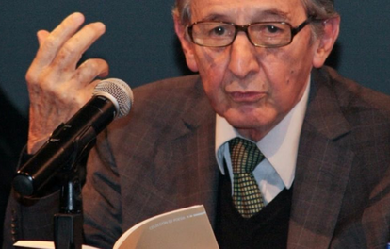
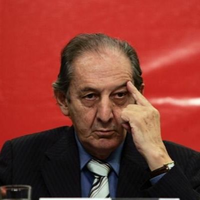
Eduardo Lizalde García de la Cadena (Ciudad de México, 14 de julio de 1929) es un escritor, poeta y académico mexicano. Estudios y docencia Su padre fue el ingeniero Juan Lizalde, quien lo enseñó a construir sonetos en su infancia. Su madre fue Elena García de la Cadena, hija del general Trinidad García de la Cadena. Uno de sus 6 hermanos fue el actor Enrique Lizalde, es primo del cantante Óscar Chávez. Realizó sus estudios en la Facultad de Filosofía y Letras de la Universidad Nacional Autónoma de México (UNAM) y posteriormente en la Escuela Superior de Música del Instituto Nacional de Bellas Artes (INBA). En 1984 obtuvo la beca Guggenheim de la John Simon Guggenheim Memorial Foundation con la cual pudo realizar estudios en Estados Unidos. Ha impartido clases de Literatura española, mexicana y latinoamericana en su alma máter desde 1958. Fue secretario general de la Escuela de Verano de la UNAM. Trayectoria profesional En 1948 fue uno de los iniciadores del movimiento Poeticismo, en el cual participaron también Enrique González Rojo y Marco Antonio Montes de Oca. En 1955 se afilió al Partido Comunista Mexicano, publicó en La Voz de México, órgano oficial del partido, poemas de contenido social e ideológico, sin embargo, en 1960, fue expulsado del partido junto con José Revueltas. Ambos fundaron la Liga Leninista Espartaco, movimiento político alternativo que abandonaron poco tiempo después. A lo largo de su trayectoria profesional ha publicado reseñas literarias en las revistas Revista Mexicana de Literatura, México en la Cultura, Ideas de México, Revista Universidad de México, así como para El Semanario Cultural de Novedades, El Gallo Ilustrado, El Nacional, Vuelta, Letras Libres y La Letra y la Imagen. De 1988 a 1994 fue presidente de Pen Club de México. Funcionario y académico En 1977 fue director de Medios Audiovisuales de la Secretaría de Educación Pública (SEP). En 1982 fue director de Televisión de la República Mexicana (TRM). De 1986 a 1989 fue director de Publicaciones y Medios de la SEP. En 1989 fue nombrado director de Ópera del Instituto Nacional de Bellas Artes. Fue director de Radio Universidad. Es director de la Biblioteca México José Vasconcelos desde 1996. Es Creador Emérito del Sistema Nacional de Creadores de Arte del Fondo Nacional para la Cultura y las Artes desde 1994. Fue nombrado miembro de número de la Academia Mexicana de la Lengua en 2006, tomó posesión de la silla XIV el 24 de mayo de 2007 con el discurso La poesía mexicana, esplendor e infortunio. Obras publicadas * La mala hora, poesía, en 1956. * Los presentes, en 1956. * Odesa y Cananea, en 1958. * La cámara, cuento, en 1960. * Luis Buñuel, odisea del demoledor, ensayo, en 1962. * Cada cosa es Babel, en 1966. * Autobiografía de un fracaso, en 1981. * El poeticismo, en 1981. * El tigre en la casa, en 1970. * La zorra enferma, en 1974. * Caza mayor, en 1979. * Memoria del tigre, en 1986. * ¡Tigre, tigre!, en 1985. * Tabernarios y eróticos, en 1988. * Siglo de un día, novela. * Otros tigres, en 1995. Premios y distinciones * Premio Xavier Villaurrutia, por su obra El tigre en la casa, en 1969. * Premio Nacional de Poesía de Aguascalientes, por su libro La zorra enferma, en 1974. * Premio Nacional de Ciencias y Artes en el área de Lingüística y Literatura otorgado por la * Secretaría de Educación Pública en 1988. * Creador Emérito del Sistema Nacional de Creadores de Arte del Fondo Nacional para la *Cultura y las Artes desde 1994. * Premio Iberoamericano Ramón López Velarde en 2002. * Premio Internacional de Poesía Jaime Sabines-Gatien Lapointe, en 2005. * Premio Internacional Alfonso Reyes, en 2011.5 * Premio Internacional de Poesía Federico García Lorca, en 2013. Referencias Wikipedia—http://es.wikipedia.org/wiki/Eduardo_Lizalde
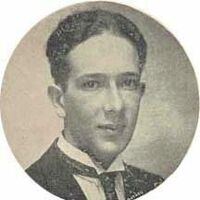
Manuel José Leonardo Arce Leal nació en la Ciudad de Guatemala en 1935. Poeta y dramaturgo, considerado uno de los escritores nacionales más relevantes de la segunda mitad del siglo XX. Fue galardonado con importantes premios centroamericanos y su obra ha sido traducida a varios idiomas. En la década del 80 tuvo que abandonar Guatemala ante las constantes amenazas por parte del régimen de Romeo Lucas García. Estando en Francia ocurrieron las peores masacres en su patria bajo los gobiernos de Lucas García y Efraín Ríos Montt. Como protesta por las mismas escribió unos duros poemas en contra de Efraín Ríos Montt, los cuales fueron censurados. Falleció de cáncer pulmonar en el exilio en Francia, el 22 de septiembre de 1985. Poesía * En el nombre del Padre, 1955 * De la posible aurora (Sonetos a mi esposa), 1957 * Cantos en vida, 1960 * Eternauta: cantos de un mar, 1962 * Los episodios del vagón de carga (anti-pop-emas), 1971 * Palabras alusivas al acto y otros poemas con el tema del amor, 1953-1978, 1978 * Poemas póstumos, 1987 Narrativa * Diario de un escribiente Tomo 1, 1979 * Diario de un escribiente Tomo 2, 1987 * De una ciudad y otros asuntos: crónica fidedigna, 1992 Teatro * Delito condena y ejecución de una gallina y otras piezas de teatro grotesco, Estrenada en 1969 * Diálogo del gordo y el flaco con una rocola. * El gato que murió de histeria. * Compermiso. * Sebastián sale de compras. * Torotumbo (adaptación de una novela de Miguel Ángel Asturias). Referencias Wikipedia—http://es.wikipedia.org/wiki/Manuel_José_Leonardo_Arce_Leal
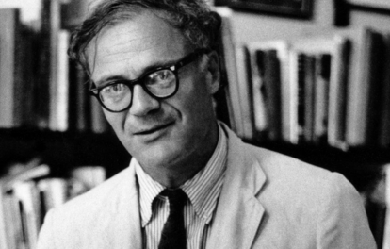
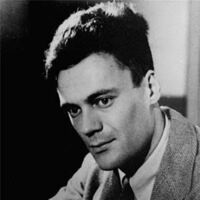
In 1917, Robert Lowell was born into one of Boston's oldest and most prominent families. He attended Harvard College for two years before transferring to Kenyon College, where he studied poetry under John Crowe Ransom and received an undergraduate degree in 1940. He took graduate courses at Louisiana State University where he studied with Robert Penn Warren and Cleanth Brooks. His first and second books, Land of Unlikeness (1944) and Lord Weary's Castle (for which he received a Pulitzer Prize in 1947, at the age of thirty), were influenced by his conversion from Episcopalianism to Catholicism and explored the dark side of America's Puritan legacy. Under the influence of Allen Tate and the New Critics, he wrote rigorously formal poetry that drew praise for its exceptionally powerful handling of meter and rhyme. Lowell was politically involved—he became a conscientious objector during the Second World War and was imprisoned as a result, and actively protested against the war in Vietnam—and his personal life was full of marital and psychological turmoil. He suffered from severe episodes of manic depression, for which he was repeatedly hospitalized. Partly in response to his frequent breakdowns, and partly due to the influence of such younger poets as W. D. Snodgrass and Allen Ginsberg, Lowell in the mid-fifties began to write more directly from personal experience, and loosened his adherence to traditional meter and form. The result was a watershed collection, Life Studies (1959), which forever changed the landscape of modern poetry, much as Eliot's The Waste Land had three decades before. Considered by many to be the most important poet in English of the second half of the twentieth century, Lowell continued to develop his work with sometimes uneven results, all along defining the restless center of American poetry, until his sudden death from a heart attack at age 60. Robert Lowell served as a Chancellor of The Academy of American Poets from 1962 until his death in 1977. Poetry Land of Unlikeness (1944) Lord Weary's Castle (1946) Poems, 1938-1949 (1950) The Mills of the Kavanaughs (1951) Life Studies (1959) Imitations (1961) For the Union Dead (1964) Selected Poems (1965) Near the Ocean (1967) The Voyage and Other Versions of Poems by Baudelaire (1968) Notebooks, 1967-1968 (1969) The Dolphin (1973) For Lizzie and Harriet (1973) History (1973) Selected Poems (1976) Day by Day (1977) Prose The Collected Prose (1987) Anthology Phaedra (1961) Prometheus Bound (1969) Drama The Old Glory (1965) References Poets.org - www.poets.org/poet.php/prmPID/10
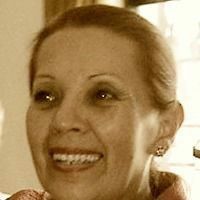
Violeta Luna (Guayaquil, 24 de febrero de 1943) es una poetisa, narradora, crítica literaria, ensayista y catedrática ecuatoriana. Ingresó a la Universidad Central del Ecuador, en Quito donde obtuvo el título de Licenciada en Castellano y Literatura, y un Doctorado en Ciencias de la Educación. Ejerció la cátedra de Lengua y Literatura, durante veinte y cinco años, en varios colegios y universidades del país.
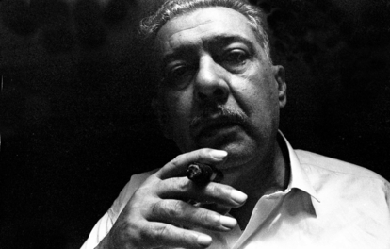
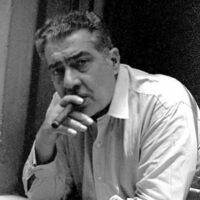
José María Andrés Fernando Lezama Lima, conocido sencillamente como José Lezama Lima (La Habana, 19 de diciembre de 1910 - La Habana, 9 de agosto de 1976) fue un poeta, novelista, cuentista y ensayista cubano. Su novela Paradiso ha alcanzado una gran repercusión internacional desde su publicación en 1966. Paradiso fue calificada por las autoridades cubanas dos años más tarde como "pornográfica" debido al tema de la homosexualidad en su trama y esto sirvió de antesala a la acusación por actividades contrarrevolucionarias en 1971 que le amargó los últimos años de su existencia.
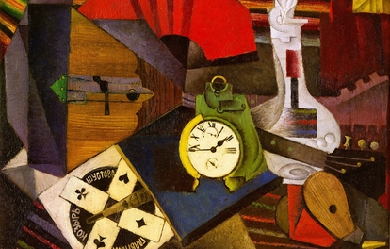
Renato Leduc (Tlalpan, Ciudad de México, 16 de noviembre de 1897- Ciudad de México, 1 de octubre de 1986) fue un escritor y poeta mexicano. De padre mexicano (abuelo francés) y madre mexicana. Le tocó vivir en su infancia y juventud algunas vicisitudes de la Revolución mexicana, durante la cual laboró como telegrafista de la División del Norte comandada por el general insurgente Francisco Villa. Fue también periodista, pero antes de hacerse poeta, fue viajante de a pie, ferrocarril, camión o tranvía, aeroplano, o montando a caballo, según lo afirma José Alvarado en la solapa de una especie de biografía que le escribió José Ramón Garmabella titulada Renato por Leduc y publicada por la editorial Océano en 1983. Tenía fama de ser "muy mal hablado" siendo capaz de decir tres groserías por cada dos palabras que pronunciaba. Comisionado por la Secretaría de Hacienda y Crédito Público, vivió en París por alrededor de siete años, y regresó a México después de vivir unos meses en Nueva York. En sus días de París se relacionó con el grupo de Artistas de Montparnasse: Antonin Artaud, André Breton, Paul Eluard, Kiki de Motparnasse Y entre ellos personajes de la talla de Alfonso Reyes, Federico Cantú, pero su mundo de amistades se extendió siempre desde la gente de barrio hasta políticos, artistas de cine, toreros y periodistas, entre los cuales estaban Federico Cantú Garza, Luis Cardoza y Aragón, Carlos Bracho, Leonora Carrington. Estuvo casado con la pintora surrealista de origen británico Leonora Carrington. Este matrimonio tuvo como fin más que nada ayudarle a ella a huir de la persecución nazi, a la cual fue sometida por haber sido la pareja sentimental de Max Ernst. Desde entonces (1942) hasta su muerte (mayo de 2011) Carrington vivió en la Ciudad de México. Leduc también fue amigo de la periodista Elena Poniatowska, el premio Nobel Octavio Paz, La Diva del cine mexicano María Félix, de quien se dice le propuso matrimonio, y del llamado músico-poeta Agustín Lara. Leduc falleció en 1986. Obra Fue un poeta popular famoso por su soneto del tiempo, cuyo título es "Aquí se habla del tiempo perdido que, como dice el dicho, los santos lo lloran", y que afirmó haber escrito cuando alguien lo retó a hacer unos versos relacionados con el tiempo, sabiendo que esta palabra no tiene otras consonantes (que hagan rima con ella) en español. Su obra literaria, sin embargo, es mucho más amplia, y en ella destaca El aula, etc... (1929), que no obstante ser su primer libro es quizá el más emblemático y redondo, por la síntesis de humor y melancolía, erotismo, lenguaje coloquial, albur, rima bilingüe y obscena, etc. Un balance de su escritura (no incluida la periodística, que es muy vasta), se halla en el estudio que acompaña a la edición de su Obra literaria. El soneto del tiempo ha sido incluso musicalizado, con su famoso inicio "Sabia virtud de conocer el tiempo...". Entre sus obras tenemos: El aula, etc.... 1929; Unos cuantos sonetos, 1932; Algunos poemas deliberadamente románticos, 1933; Breve glosa del Libro de Buen Amor, 1939; Versos y poemas, 1940; XV fabulillas de animales, niños y espantos, 1957; Catorce poemas burocráticos y un corrido reaccionario, 1962; Prometeo, la Odisea, Euclidiana, 1968. Mucha de su obra tiene un sentido erótico, cuando no es francamente directa y explícita en estos temas. En el ámbito periodístico publicó diversas columnas en los diarios Excélsior, Últimas Noticias, Ovaciones, ESTO y Siempre!, entre otras. Premios En 1978 fue galardonado con el Premio Nacional de Periodismo de México, de forma especial, en reconocimiento a su trayectoria, repitiendo el galardón en 1983 por sus comentarios publicados en el periódico Excélsior. Fuente Wikipedia - http://es.wikipedia.org/wiki/Renato_Leduc

I'm a writer, free-thinker, designer and mother of three. I'm working on my first book, a memoir which I am aiming to finish in 2016. Being a creative spirit, I've found life to be rocky at times... It took me a long time to finally dedicate myself to 'my work' - one day I hope it will be paid work (!) but for now it is enough just to put it out there in the hope that I inspire others. http://goingtoseed.blogspot.com.au - My blog 'Going To Seed' where I explore all sorts of ideas and progressive thinking...


